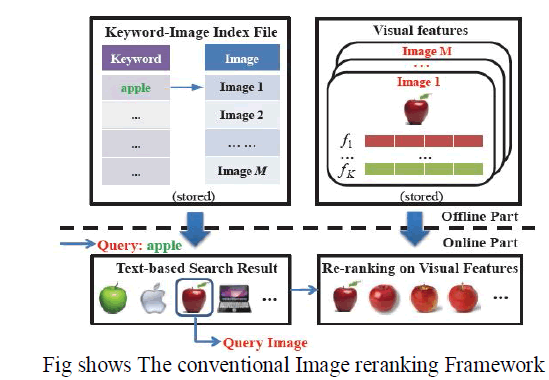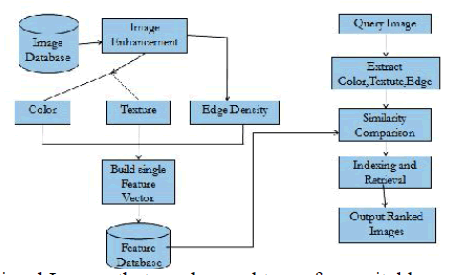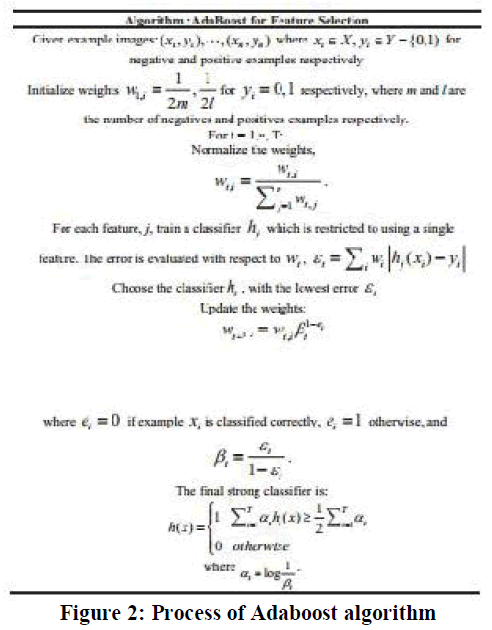ISSN ONLINE(2320-9801) PRINT (2320-9798)
ISSN ONLINE(2320-9801) PRINT (2320-9798)
| Bhakti P. Buche, V.S.Nandedkar Department of Computer Science, P.Vasantdada Patil Institute of Engineering and Technology, University of Pune., MH, India |
| Related article at Pubmed, Scholar Google |
Visit for more related articles at International Journal of Innovative Research in Computer and Communication Engineering
Image re-ranking, as an effective way to improve the results of web-based image search has been adopted by current commercial search engines.a query keyword, a pool of images are first retrieved by the search engine based on textual information. Asking the user to select a query image from the set the minus images are reranked based on their visual similarities with the query image.Query and Image based recommendation sorted by the method of re-ranking provides an accurate output of images based on the visual semantic signatures of the query image .In query based recommendation, keyword expansions help provide better results whereas in image recommendation, re-ranking based on priority of images accessed by other users provides moreaccurate results.At the online stage, images are re-rankedby comparing their semantic signatures obtained from thevisual semantic space specified by the query keyword.
INTRODUCTION |
| The primary objective of this paper is to provide accurate search results based on keyword expansion as well as comparing the semantic signatures of images to provide re-ranked images for the users. The application will feature a search box for typing queries as well as have an option to browse and open the image which the user requires to search for in the web. There are two stages: offline stage and online stage. Semantic signatures of any image queried by the user is calculated and stored in database at the offline stage. Most of the work is done at the offline stage. At the online stage, the user receives re-ranked images those are calculated using semantic signatures at the offline stage.A novel framework is proposed forweb image re-ranking. Instead of developing a universal concept dictionary it learns different visual semantic spaces for different query keywords individualyandautomatically. For example, if the query keyword is “apple”, the semantic concepts of “mountains” and “Paris” are unlikely to be relevant and can be ignored. Instead, the semantic concepts of “computers” and “fruit” will be used to learn the visual semantic space related to “apple”. they removed other potentially unlimited number of non-relevant concepts, which serve only as noise and deteriorate the performance of re-ranking in terms of both accuracy and computational cost. The visual features of images are then find into their related visual semantic spaces to get semantic signatures. |
 |
| Therefore the semantic signatures are very short and online image reranking becomes extremely efficient because of the large number of keywords and the dynamic variations of the web, the visual semantic spaces of query keywords need to be automatically learned. Instead of manually defined, under our framework this is done through keyword expansions.introduce a large scale benchmark database1 with manually labeled ground truth for the performance evaluation of image re-ranking. |
LITERATURE REVIEW |
| The author XiaongWang,KeLiu,Xiaou Tang describes the novel image reranking frameworkAs well as gives the compitaional cost and Siddanagowda G R ,SantoshS,SandeepkumarS,Raghu M T talk about the how to use semantic signature for web image reranking as well as retrival was performed as summarization of similarities of individual feature. The KirtiYadav ,SudhirSingh,DiptiBartakke,ArchanaGulatiSayliBaxi, S.V.Dabhade introducesthe remarking images using various files such as video,Midifile,speech wave files etc .specific query semantic spaces are used get more improvised reranking of image also we studied not only the offline image serarch but also the novel internet image search approach which requires one click user feedback intetntion specific weight schema is proposed to compute visual similarity. |
EXISTING APPROACHES |
| 1) Old Image Re-ranking Framework |
| Major web image search engines have adopted the strategy.A query keyword input by a user a pool of images relevant tothe query keyword are retrieved by the search engine according to a stored word-image index fileby the user to select a query image which observes the user’s search objective, from the set, the remaining images in the set are re-ranked based on their visual similarities with the query image. The text-image index file and visual features of images are precalculated offline and storedvisual features must be saved then the web image collection isdynamically upgraded. If the visual features are not selected and only the similarity scores of images are stored whenever a new image is added into the collection and we have to compute its similarities with existing images, then the visual features need be computed again. |
| 2) Text based image search:- |
| Many large internet scale image search methods are text-based and are limited by the fact that query keywords cannot describe image content accurately. In paper an approach named ReSPEC(Re-rankingSets of Pictures by Exploiting Consistency), that is a hybrid of the two methodsit is shown that visual consistencies in the output images can be find out and then used to rank the images according to their closeness to the visual object category. CBIR (Content-based image retrieval) uses visualfeatures to evaluate image similarity. Many visual features weredeveloped for image search in recent years. Somewere global image features, such as GIST andHOG (Histogram of Oriented Gradient) Kevinproposed GIST which exploit visual context, bywhich we mean a low-dimensional representation ofthe whole image.Some local image features such as SIFT Davidproposed a method for extracting distinctive invariant features form |
 |
| Figure 1: visual information retrieval Images that can be used to performsuitable matching between different views of anobject or scene. |
RELATED WORK |
| After the user log in, first user log displays the information about the previous user recently searched images. From that a particular query selected by the user or a new query given by the user which retrieves images from the database or user can directly search for the image query in database. In this systemclassification of images can be displayed by means of semantic signature. |
ADABOOST |
| AdaBoost is one of the most important fast convergences, and easy capturing machine learning algorithm. It requires no prior knowledge about the weak learner and can be easily combined with other method to find weak hypothesis, such as support vector machine. Feature selection is an optimization process to reduce a large set of original rough features to a relatively smaller feature subset which containing only significant to improve the classification accuracy fast and effectively. |
 |
| A. ImageCheck Algorithm |
| This ImageCheck algorithm is used to eliminate the redundancy of an image; the working principle of an ImageCheck algorithm is when the user uploads an image, the image data like the color value of every single pixel and image size are pre-processed and stored in a data grid, then images and datasets are stored in a database.Each time when user tries to upload an image its compares the new image dataset with all dataset in database. If any one of the dataset matches with new image dataset, then the image is not allowed to store in database. |
| Algorithm: ImageCheck |
| 1: upload image (j) |
| 2: [img]ïÿýïÿýïÿýïÿýfetch array (i, s, p, c) |
| 3: Check images in uploaded files |
| 4: if j=0 then |
| 5: assign img_id [] |
| 6: allow upload and increment i |
| 7: end if |
| 8: While j>=i do |
| 9: Compare [img] |
| 10: If new-img_id [] ==img_id [] then |
| 11: Does not allow upload |
| 12: Else |
| 13: allow upload |
| 14: assign img_id [] |
| 15: increment is |
| 16: end if |
| 17: end while |
| 18: end |
| In this algorithm, ‘i’ represent an image [img] represents the dataset. In First step when the user upload an image it fetch the image color value of every single pixel and size and stored in [img]. The Next step, if there is no image is present in the database then the default ‘i’ value is Zero. Then image is uploaded and assigned its image id [2]. ext time a new image is uploaded it compares the new image dataset with existing dataset by using image id[2] if both images are not same then the image is allowed to store in a database, else it will not allow to upload and shows an alert message. |
CONCLUSION |
| Derived two algorithm which is best for image search for the web imagererankingboth text and images will be provided the best image search results aswell tested the idea of reranking on the three text queries to a large scale web image search engine and it will be reasonable or need the image are re-ranked using keyword expansion to provide better efficiency and effectiveness by using precise output so we construct all this technique in web.Reranking process will be applicable if media files are associated with web pages such as video, musicfiles, media files speech wave files etc. |
References |
|